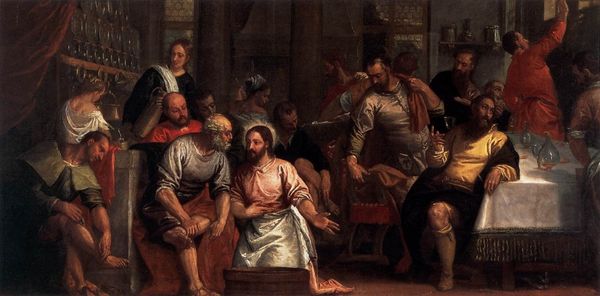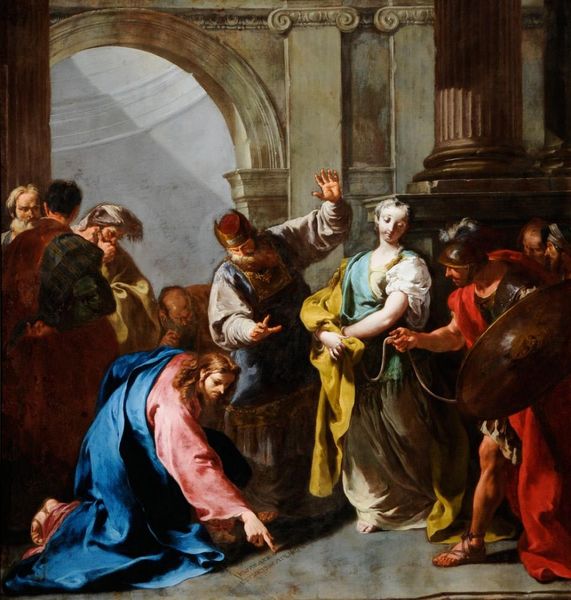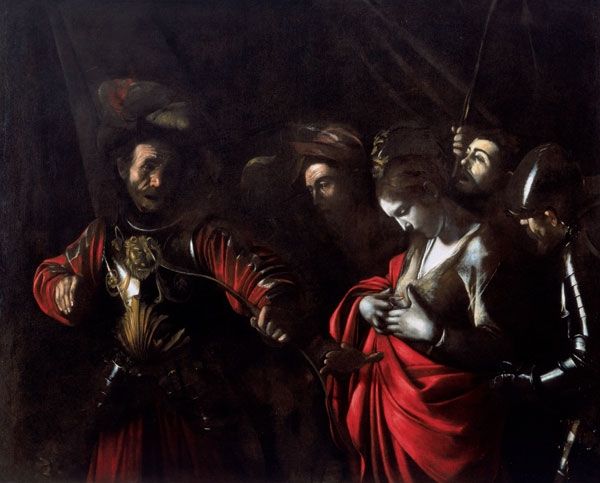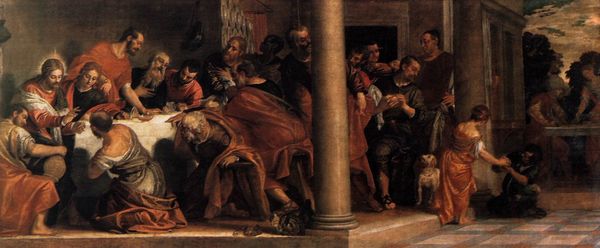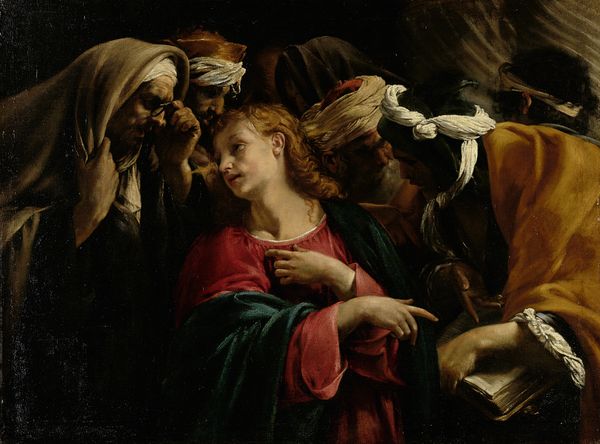
painting, oil-paint
#
venetian-painting
#
narrative-art
#
painting
#
oil-paint
#
mannerism
#
painted
#
figuration
#
history-painting
Copyright: Public Domain: Artvee
Jacopo Tintoretto painted this large canvas of "Christ and the Adulteress" sometime in the 16th century. Tintoretto sets the famous scene from the Gospel of John in a bustling Venetian interior. The drama unfolds as Christ confronts the woman's accusers, challenging them with the well-known phrase, "He that is without sin among you, let him first cast a stone at her." The artist uses dynamic composition and dramatic lighting, typical of the Venetian school, to underscore the tension and moral weight of the moment. Painted during the Counter-Reformation, Tintoretto's work reflects the Catholic Church's renewed emphasis on moral reform and the themes of repentance and forgiveness. However, it also speaks to Venice’s unique political and social climate, where issues of justice, morality, and public shaming were hotly debated. What did it mean to show compassion in a world of harsh judgements? By situating the artwork in its original historical context, and by looking at the artist's biography, religious history and social culture of 16th century Venice, we come to a richer understanding of its meaning and purpose.
Comments
No comments
Be the first to comment and join the conversation on the ultimate creative platform.




